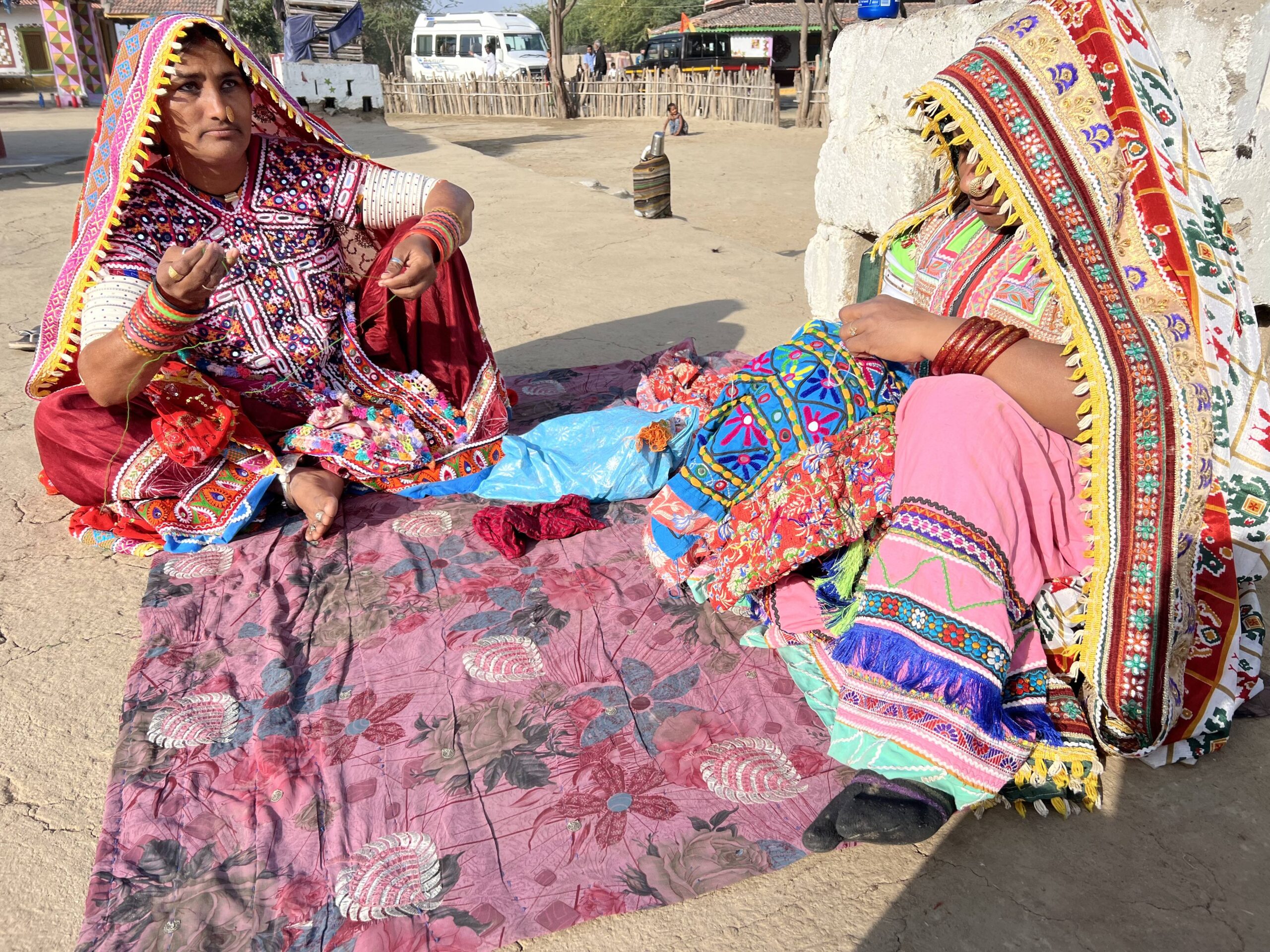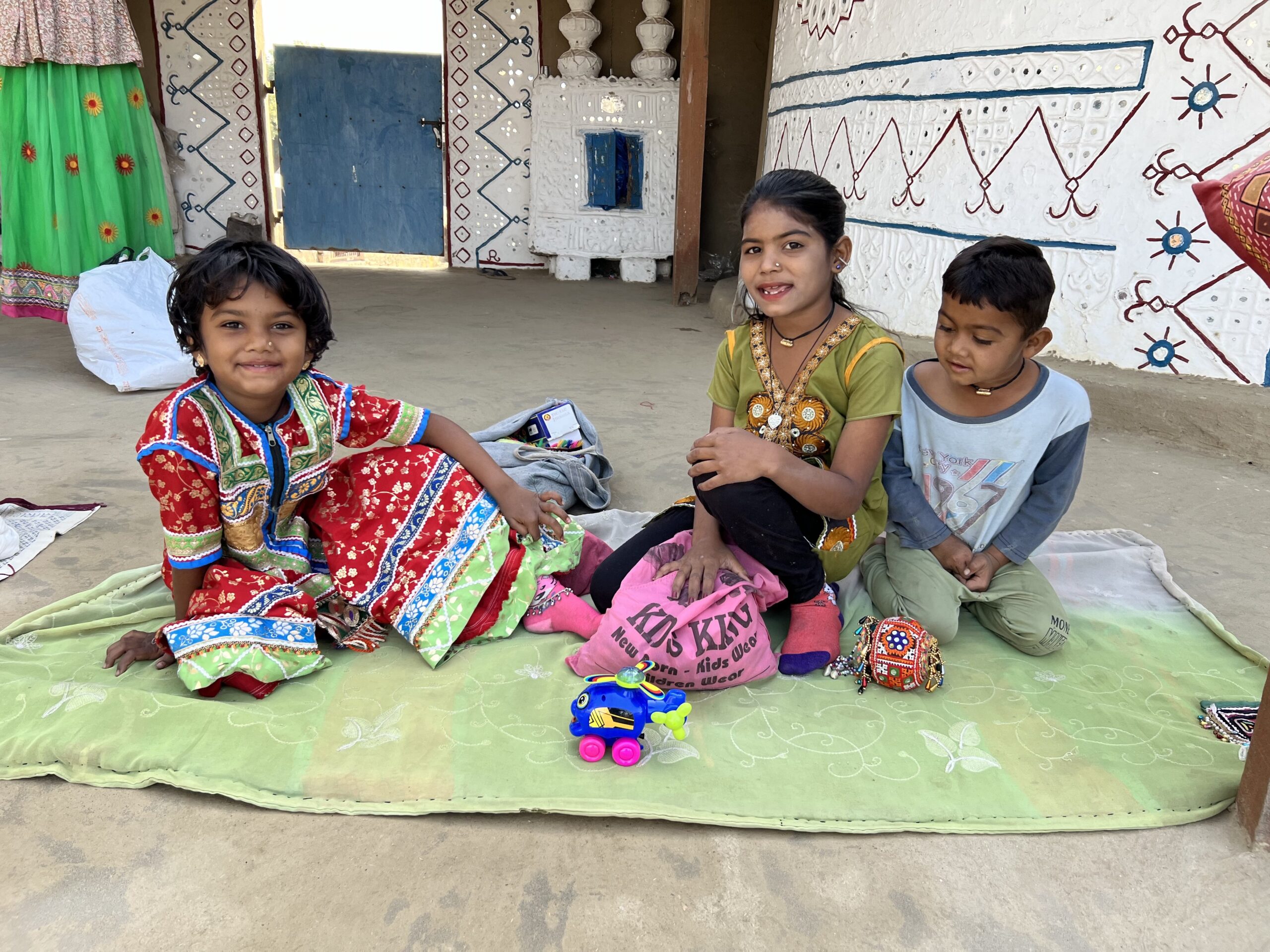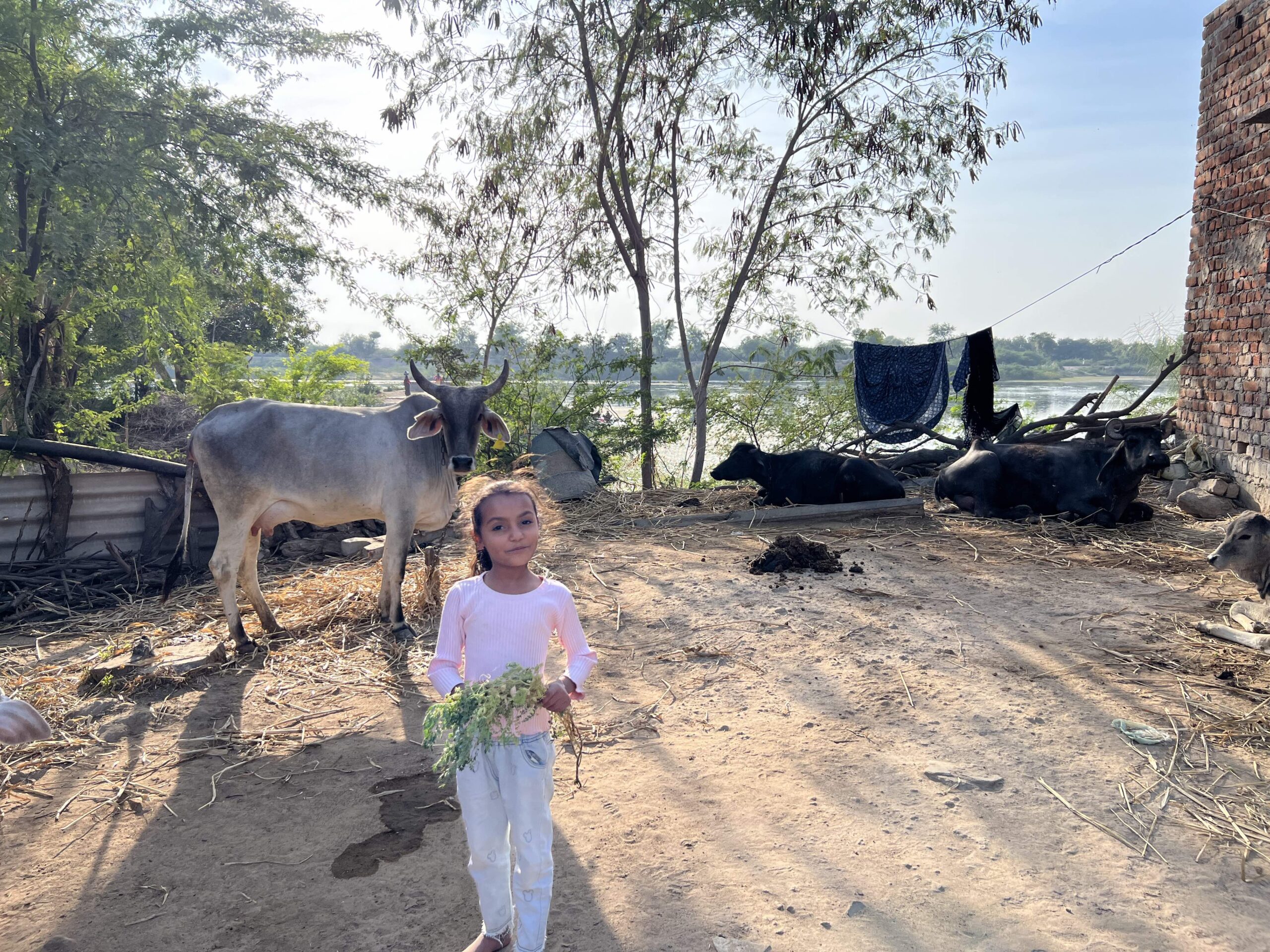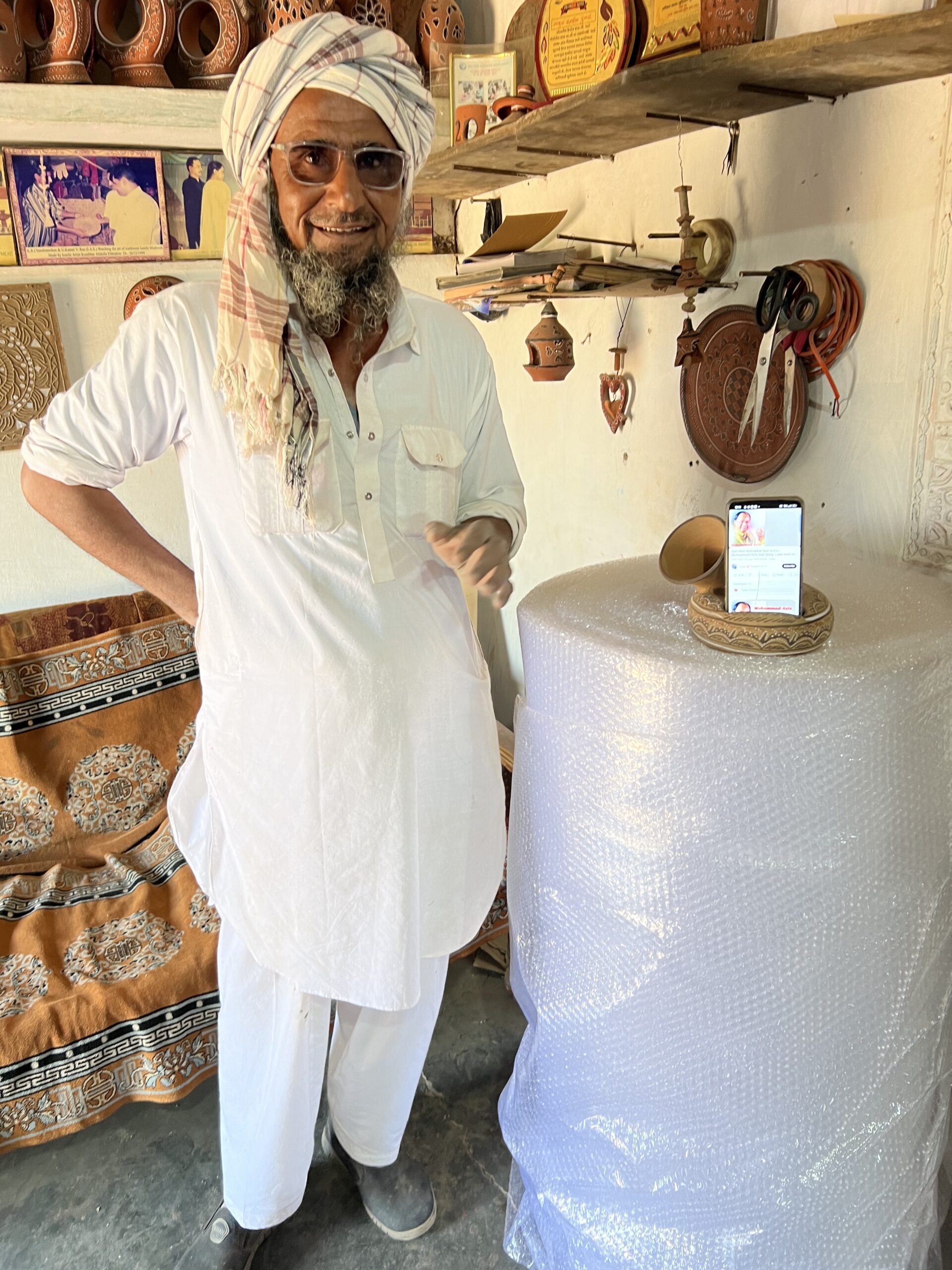January 31
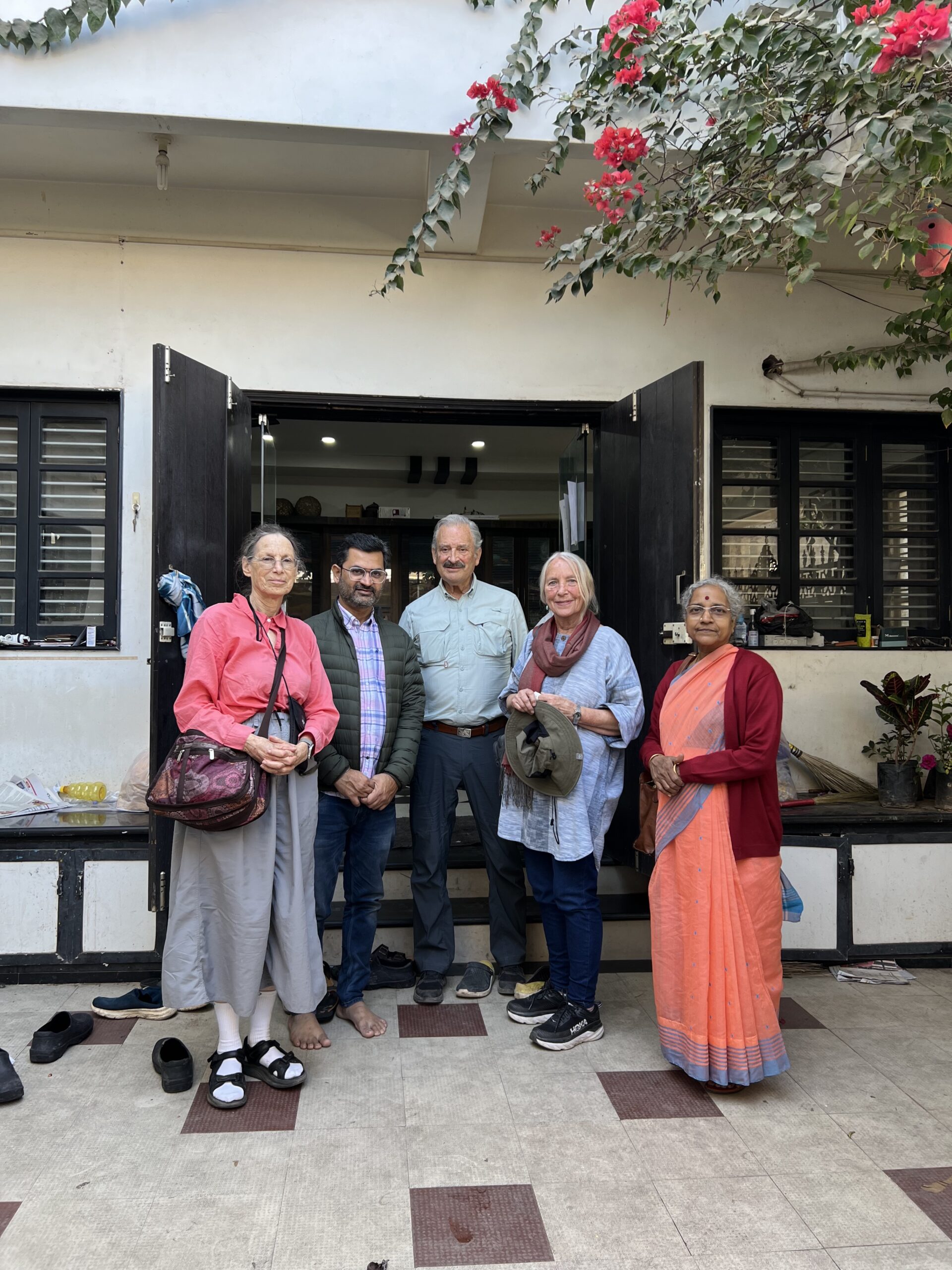
An early start at 6:30 to reach Ahmedabad by our strict entrance timing into The Calico Museum. Knowing Ginny’s interest in textiles, I worked for about 6 weeks to finally succeed in getting reservations for this date. It is run by the Surabhai Foundation, entrance is free, but only through a complicated entry system by which you have to provide detailed information about each visitor in order to be considered for the 20 spots in the morning and 20 spots in the afternoon for their 2 different tours to different buildings and collections. This is in part to keep the exhibition closed and expose it to light and people for only a short period of time each day. And perhaps also to allow only serious tourists willing to put the effort into the application process to be allowed entry.
And very worth the effort. One of the most extraordinary museums I have ever been in. Designed around a philosophy for “contemplating a whole rather than its segregated parts”. Absolutely no photos are allowed inside the guarded gates so I can’t share any images with you.
The morning tour was in an elegant old early twentieth century building containing spaces which created the atmosphere of the local religious cultures of both town and village. There were stunning South Indian bronzes arrayed in niches and crevices in very dim light with magical very large hangings on walls and ceilings, many of them antique Kalamkari paintings on cloth, designed as backdrops in temples. The focus was textiles and objects related to a young Lord Krishna. Central was a stylized image of blue Krishna as a child surrounded often by dancing women. As you walked through each section in its own unique configuration, it was lit up to display its contents so that you never knew quite where you were and the disorientation was part of the experience. A flock of guards hovered around us to turn lights on and immediately off as we walked on, both protecting the environment for the fabrics and augmenting the air of mystery.
Our tour guide was an older austere woman with a dramatic vocal style – who was very difficult for us to understand. She allowed no questions or any interference with the pattern of the tour, taking us quickly, far too quickly, past magnificent displays and hidden corners with exceptional art objects, all in very dim light. The tour was for 2 hours and ended right on time.
There is no entrance fee or even any profit-making museum shop with only a few postcards for sale. It is a labor of love.
After lunch, we return for the separate afternoon tour (which also needed a reservation through their complicated system) and was led by the same strict woman around the gardens landscaped with native plants to hidden buildings, which are parts of hand carved wooden haveli style Gujarati mansion from 200 years ago. Our guide said that at the time these kinds of old buildings were being torn down for modern structures at the turn of the 20th century, some were rescued and resurrected, like this one, in another part of the city.
The emphasis on this second tour was more on traditional life practices, with the wooden building displaying very old saris and objects of daily life, but also royal costumes and some textile techniques. Once again, being led in dim light up stairs and around corners to discover extraordinary objects. We are actually glad that we visited this museum at the end of our tour and not the beginning as over time we developed an appreciation of the great diversity and creativity of Gujarat.
Our last event was a visit to the home of a friend a friend of Ginny’s for whom she had transported a gift. It was a very appropriate conclusion of our tour to sit outside a local home and have some delicious snacks and food and speak about life in India.
We depart very early in the morning for the airport and say a fond farewell to Gayathri who leaves a little later in the day. A good visit to a region too rarely visited by foreign tourists.
Epiloque
As I have no photos from our last day I am ending this series of posts about Gujarat with some photos taken throughout this journey that did not get included earlier. They are an addendum but they do express some of the diversity of the world we have been visiting.

